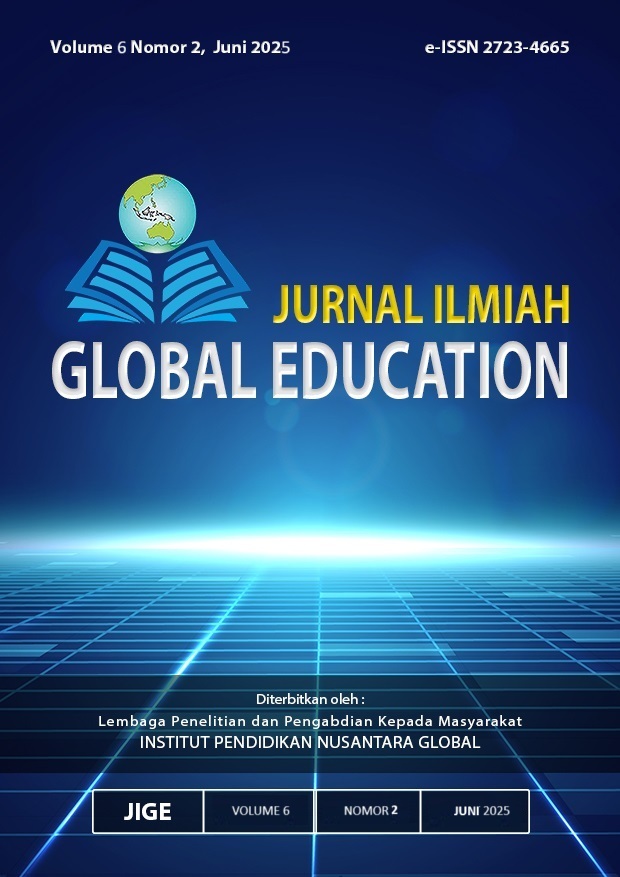Perbandingan Efektivitas Digital Marketing Melalui Platform Instagram dan Tiktok Pada Ritel Makanan dan Minuman
DOI:
https://doi.org/10.55681/jige.v6i2.3676Keywords:
digital marketing, food and beverage retail, social mediaAbstract
This research analyzes the comparative effectiveness of digital marketing through Instagram and TikTok platforms in the food and beverage retail sector using a quantitative survey-based approach involving 50 business owners. The research objective is to identify the strategic advantages of each platform based on three key indicators: Engagement Rate, Reach, and Conversion Rate. Descriptive analysis results demonstrate TikTok's superiority in Engagement Rate (8.7% vs 5.2%) and Conversion Rate (3.8% vs 2.1%), while Instagram excels in Reach (12,000 vs 9,500). Multiple linear regression analysis confirms the significant influence of all three indicators on digital marketing effectiveness, with Conversion Rate as the dominant predictor (β=0.41), followed by Engagement Rate (β=0.38) and Reach (β=0.29). The constructed model shows substantial predictive power (R²=0.72). The findings suggest differentiated marketing strategies based on each platform's unique characteristics, with TikTok optimized for interaction and conversion through interactive and trend-responsive content, while Instagram focused on maximizing reach through premium visual content and e-commerce integration. The implications of this research contribute to the development of a data-driven strategic framework for optimizing digital marketing resource allocation.
Downloads
References
Amiri, A. M., Kushwaha, B. P., & Singh, R. (2023). Visualisation of global research trends and future research directions of digital marketing in small and medium enterprises using bibliometric analysis. Journal of Small Business and Enterprise Development, 30(3), 621–641. https://doi.org/10.1108/JSBED-04-2022-0206
Bhandari, A., & Bimo, S. (2022). Why’s Everyone on TikTok Now? The Algorithmized Self and the Future of Self-Making on Social Media. Social Media and Society, 8(1). https://doi.org/10.1177/20563051221086241
Bilyk. (2023). IMPACT OF SOCIAL MEDIA ON CONSUMER BEHAVIOR: ANALYSIS OF TRENDS AND CHALLENGES.
Chalipah, D., Ishmah, H. D., Masitoh, I., Azzahrah, L., Edrea, S. N., & Subing, N. C. (2024). The essence of tiktok social media content: opportunities and challenges in popularizing local cultural identity. 1(1), 29–37.
Faraj, N. (2022). Marketing of SMEs in the digital age: Challenges and issues Saida FILALI, (Professor) Marketing of SMEs in the digital age: challenges and issues. © Authors: CC BY-NC-ND, 3, 231–241. www.ijafame.org
Guerrero, K. J. (2023). An Analysis of TikTok’s Digital Marketing Capabilities and Its An Effectiveness for Brands and Businesses Across Different Industries. 6–19.
Le, T., & Kotaskova, A. (2023). The role of brand and market orientation on competitive advantage in the food sector: business strategy’s moderator role. British Food Journal, 125. https://doi.org/10.1108/BFJ-01-2023-0010
Matassi, M., & Boczkowski, P. J. (2023). To Know Is to Compare: Studying Social Media across Nations, Media, and Platforms. MIT Press. https://books.google.co.id/books?id=oXF6EAAAQBAJ
Nirwana, A., Soetjipto, B. E., Winarno, A., Hermawan, A., & Sukaton, O. Z. (2023). A Decade of Visual Marketing in a Digital Environment: A Systematic Review. Asian Journal of Economics, Business and Accounting, 23(13), 1–17. https://doi.org/10.9734/ajeba/2023/v23i13990
Nutsugah, N., Kuupuolo, E., & Peculiar, T. (2024). A Systematic Review of Social Media Research in Ghana: Gaps and Future Research Avenues. Annals of the International Communication Association, 48(2), 167–181. https://doi.org/10.1080/23808985.2024.2323739
Petrovska, I., Paunovski, I., & Tanevski, B. (2023). BRAND COMMUNICATION ON INSTAGRAM. Economic Development, 25, 169–181. https://doi.org/10.55302/ED23253169p
Rahman, W. N. A., Mutum, D. S., & Ghazali, E. M. (2022). Consumer Engagement With Visual Content on Instagram: Impact of Different Features of Posts by Prominent Brands. International Journal of E-Services and Mobile Applications, 14(1), 1–21. https://doi.org/10.4018/IJESMA.295960
Semenda, O., Sokolova, Y., Korovina, O., Bratko, O., & Polishchuk, I. (2024). Using Social Media Analysis to Improve E-commerce Marketing Strategies. International Review of Management and Marketing, 14(4), 61–71. https://doi.org/10.32479/irmm.16196
Shen, Z. (2023). Research on the Current Development and Optimization of TikTok’s Digital Marketing Strategies. Highlights in Business, Economics and Management, 23, 142–148. https://doi.org/10.54097/pqyn9177
Tochukwu Ignatius Ijomah. (2024). Advancements in project management methodologies: Integrating agile and waterfall approaches for optimal outcomes. Engineering Science & Technology Journal, 5(7), 2216–2231. https://doi.org/10.51594/estj.v5i7.1312
Venciūtė, D., Auruskeviciene, V., & Reardon, J. (2023). The impact of social media marketing on new venture performance. Corporate Communications An International Journal, 28. https://doi.org/10.1108/CCIJ-11-2022-0137
Yantian, M., Ahmad, Z., Alkhairy, I., Alsuhabi, H., Alizadeh, M., & Mouhamed, M. R. (2022). Brand Awareness via Online Media: An Evidence Using Instagram Medium with Statistical Analysis. Computational Intelligence and Neuroscience, 2022(2015). https://doi.org/10.1155/2022/2739685
Zainal Arifin, S. E. M. E., Prof. Dr. Yoes, S. E. M. M. P. D., Sarwo Eddy Wibowo, M. M., Filda Angellia, S. K. M. M. S. I., Iswahyu Pranawukir, S. S. M. I. K., RR Roosita Cindrakasih, S. H. M. I. K., Efitra, S. K. M. K., Dra. Rr. Aryanti Kristantini., M. K., Maria Jashinta Elisabet Hamboer, S. I. K. M. I. K., & Sepriano, S. S. M. K. (2023). Bisinis Digital Digital Marketing Saat ini (Kemampuan Digital Marketing dengan Menguasai Digital Konten Spesialist pada Masa Society 5.0). PT. Sonpedia Publishing Indonesia. https://books.google.co.id/books?id=Z56oEAAAQBAJ
Downloads
Published
How to Cite
Issue
Section
License
Copyright (c) 2025 Dixian Bhikuning, Hera Wasiati, Ivanda Davin Radinka, Noval Satria

This work is licensed under a Creative Commons Attribution-ShareAlike 4.0 International License.












